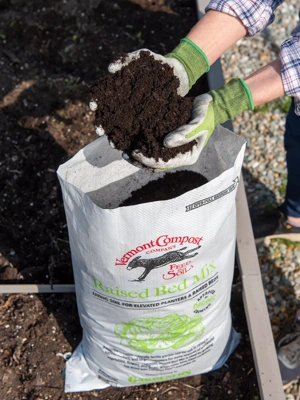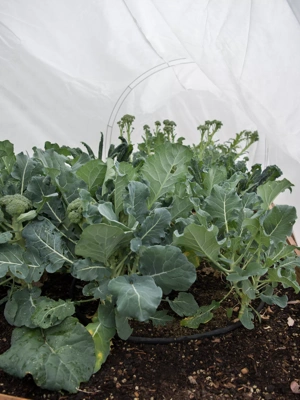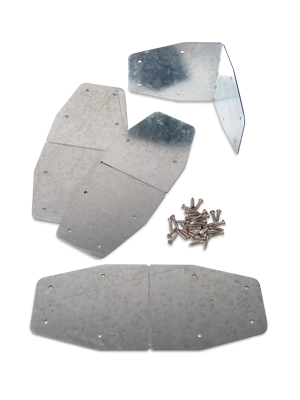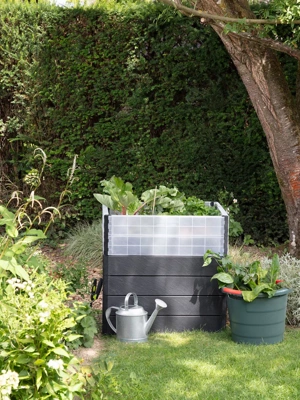More Articles
Find more garden information
Other Article Categories
 Chipman's Canada Red rhubarb
Chipman's Canada Red rhubarb
Rhubarb is a long-lived perennial grown for its succulent, super-tart stalks. It is usually one of the first spring foods that can be eaten from the garden and at any time of the season it provides a good excuse for making pie.
Rhubarb is one of the least demanding of all crops. Once established, there's little work required. A happy plant will produce for decades. Grow rhubarb in full sun, in rich, lightly moist soil. In hot regions (USDA hardiness zone 6 and higher), plant rhubarb where it will get some protection from hot afternoon sun. Rhubarb will not thrive in a soggy location, where it will be susceptible to root rot, one of the few problems rhubarb can encounter. If your soil is heavy and doesn't drain well, raised beds are a good option.
Rhubarb is a great pass-along plant. One way to get your rhubarb patch off to a fast start is to talk a fellow gardener into giving you a "chunk off the old block." The best time to do this is in early spring before the plant's leaves begin to unfurl. Use a sharp spade to slice down through the crown, taking out a piece with at least two pink knobs on top. You can also purchase container-grown plants from a garden center.
When preparing the planting hole, remember that this is a perennial plant that will grow for many years in the same spot. So dig a deep, wide hole (18" deep and 18-24" wide) and partially fill it with a 50:50 mix of compost or aged manure and good garden soil. Add a cup or two of all-purpose organic fertilizer and then place the roots in the hole and continue filling it, making sure that the buds end up 1-2" below the soil surface.
It is important to keep rhubarb plants well-watered for the first year or two. Mulch will help to minimize water loss and maintain a more consistent moisture level. To maintain good production, add a few shovelfuls of compost around the crowns each spring.
At maturity, a rhubarb plant gets to be about 3 feet in diameter, so plant them 3 to 4 feet apart in a 3- or 4-foot-wide bed. Four to six plants will provide plenty of stalks for most families. Harvest sparingly, starting in the second year. Rhubarb sends up Jack-in-the-beanstalk like flower stalks, sometimes reaching 6 feet tall. They are decorative, but use up some of the plant's energy. Remove the flowers as soon as they begin to form and you'll be able to keep picking tender rhubarb stalks right through the summer and into the fall.
Is Rhubarb Poisonous?
Only the stalks of rhubarb are edible. The leaves contain oxalate, making them poisonous when consumed in large quantities.
According to the Rhubarb Compendium, you'd have to eat a lot of rhubarb leaves for it to be deadly — approximately 11 pounds. "Note that a fraction of that can cause sickness."
 Eat the stalks, not the leaves.
Eat the stalks, not the leaves.
Common-Sense Precautions
- Trim leaves from stalk right away.
- Wash the stalks before eating.
- Make sure children understand that only the stems are edible.
- Don't let your pets eat it.
- Don't use stalks after a frost (oxalic acid from leaves can migrate into stems).
Last updated: 09/14/2023
Related items


$22.99


$299.99


$19.99 - $54.99


$18.99 - $24.99


$29.99


$69.99 $39.99


$239.99
{{/content}}
Get the Dirt
Stay up to date on new articles and advice. Please fill out the information below.
FAQs
So dig a deep, wide hole (18" deep and 18-24" wide) and partially fill it with a 50:50 mix of compost or aged manure and good garden soil. Add a cup or two of all-purpose organic fertilizer and then place the roots in the hole and continue filling it, making sure that the buds end up 1-2" below the soil surface.
What is the secret to growing rhubarb? ›
Rhubarb needs an open, sunny or partially shaded site, and rich, moist soil. It will grow well in a sunny, open site, on a wide range of soils, as long as it has been well-prepared with plenty of manure or compost.
Do coffee grounds help rhubarb? ›
Incorporating coffee grounds into the soil around rhubarb plants can improve soil structure, promote microbial activity, and enhance overall plant health. Also, coffee grounds can help deter certain pests, such as slugs and snails, which may damage rhubarb foliage.
What is the best fertilizer for rhubarb? ›
When it comes to fertilising rhubarb, you can either apply organic matter, such as homemade garden compost or well-rotted manure, or an organic concentrated fertiliser in granular form to the soil. Garden compost and well-rotted manure generally contain low levels of nitrogen, phosphates and potash (NPK).
How do you encourage rhubarb to spread? ›
Give rhubarb room to spread out by planting them 4 to 6 feet apart. Improve your native soil by mixing in several inches of aged compost or other rich organic matter. When hot weather arrives, apply a 2-inch layer of mulch to keep soil moist and help block weeds.
Is Miracle-Gro good for rhubarb? ›
To grow delicious rhubarb, you will need: Rhubarb crowns. A spade. A supply of compost or well-rotted farmyard manure such as Miracle-Gro Premium All Purpose Compost.
What makes rhubarb grow better? ›
The best soil for rhubarb is well-drained. Loamy soils are better for rhubarb growth than sandy soils. They are more water-retentive and can provide more nutrients to the plant. Soil pH is not important.
Is Epsom salt good for rhubarb plants? ›
Verdict: Unless you have a magnesium deficiency in your garden, there is no need to add Epsom salts. Doing so could even be harmful to soil, plants and water. Find out more about healthy soil and getting a soil test.
Are egg shells good for rhubarb? ›
I now store our eggshells in a 5-gallon bucket, where they are ready and waiting for spring to come and the fun but pesky snails and slugs to make their debut. I have had great success in saving my rhubarb by sprinkling a nice coating of shells around the base of my rhubarb and a few other plants every year.
What is the best food for rhubarb plants? ›
For the highest yields of rhubarb stems, fertilize your plants three times per year. Apply 2 to 3 inches of composted manure, compost or ½ cup of an all-purpose garden fertilizer, such as 10-10-10, around each plant in early spring (now).
Rhubarb likes consistent moisture. While mature plants can be somewhat tolerant to drought, rhubarb in its first two years of growing needs regular watering. However, don't overwater rhubarb, as the crowns can rot in wet soil. A good rule is to water the plant when the top inch of soil dries out.
How to grow thick rhubarb stalks? ›
Dividing Your Crowns
Splitting your crown up will breathe fresh air into your plant which will provide you with thicker, healthier stalks. Crown division is simple, you will just need to dig out your entire rhubarb plant and split it at the root ball into sections that have at least 2 or three buds.
How do you perk up rhubarb? ›
If you have a lot of rhubarb you can blanch the stems in boiling water for about 45 seconds, drain well, cool, cut into pieces and freeze for up to three months. Limp rhubarb can be perked up by standing the stems upright in chilled water for about an hour.
How to get thicker rhubarb stalks? ›
Rhubarb is a heavy feeder and needs to be planted in soil high in organic matter if you want to have large, thick rhubarb stalks. It helps the plant to cultivate around it, and to keep it mulched, weed-free, and well watered. The plant also likes a neutral pH soil.
Does rhubarb like Epsom salts? ›
The rhubarb seems to appreciate it and has had a recent growth spurt. My other herbs don't seem to care and are just being normal.
How do you get rhubarb to multiply? ›
Dividing Rhubarb
Insert a shovel about 6 inches into the ground next to the base of the plant and lift out the entire crown. Some roots will break off and be left in the ground. Using your hands, a hatchet, or machete, break the crown into fist-sized pieces, each with at least one bud and a large root piece.
 Chipman's Canada Red rhubarb
Chipman's Canada Red rhubarb Eat the stalks, not the leaves.
Eat the stalks, not the leaves.







